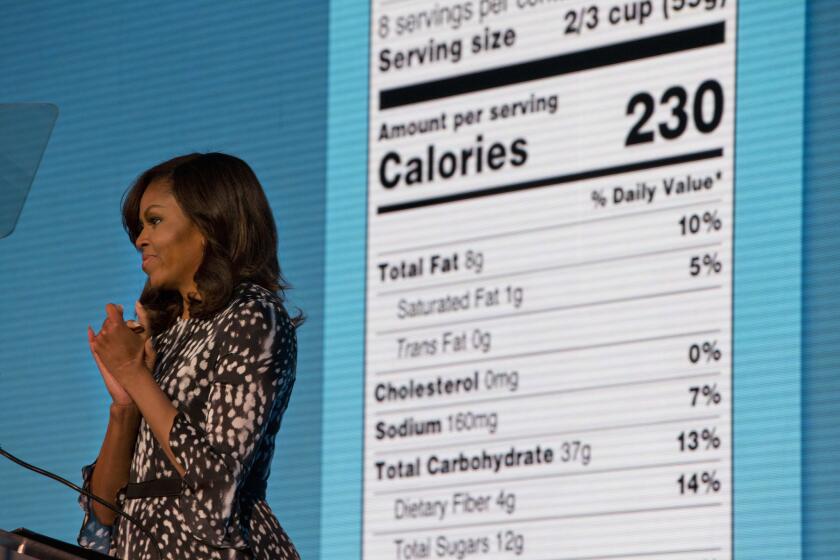Ralphs owner Kroger said its bread had 30 calories a slice. Now, California prosecutors are suing

Could that slice of Kroger brand carb-conscious bread really contain only 30 calories?
The answer, according to a new lawsuit filed by a pair of California prosecutors, is no.
In the civil suit against the supermarket chain, which owns around 300 Ralphs and Food 4 Less stores in the state, the district attorneys from Santa Barbara and Ventura counties accused the company of false advertising and violating state laws about fair competition.
“Consumers rely on nutritional information to make important decisions about their personal health,” Ventura County Dist. Atty. Erik Nasarenko said in a statement. “For some consumers, these decisions are based upon medical necessity.”
A representative for Kroger did not respond to a request for comment.
The allegations focus on the Cincinnati company’s line of Carbmaster loaves. Prosecutors noted that the front of the packaging for the line’s white bread included big, bright type alerting customers it contained “30 CALORIES PER SERVING.”
Federal officials are super-sizing key information on nutrition labels for packaged foods and adding additional data to help Americans make healthier choices as their appetites -- and many products marketed to fill them -- have grown.
At some point, prosecutors say, Kroger changed the mandatory nutritional content label on the back of its package to reflect that each slice in fact had 50 calories. Still, it left the 30-calorie claim on the front. In another instance, hamburger buns labeled with a note reading “GREAT TASTE. NO REGRETS,” listed 50 calories per serving on the front, but the back label said each bun had 100 calories.
“It doesn’t honestly surprise me,” said Susan B. Roberts, senior associate dean of foundational research at Dartmouth College’s school of medicine, who has researched calorie counts for years.
Part of the complication, she said, is that the Food and Drug Administration allows manufacturers to choose from several different methods for calculating calorie counts.
“It’s almost impossible to actually police all of these,” Roberts said. “To a large extent, we’re dependent on the honesty of the food companies.”
Prosecutors say they contacted Kroger about the bread packaging back in 2022. But as of Monday morning, the website for Ralph’s showed a loaf of wheat bread boasting 30 calories per serving on the front, while the nutritional label said each slice had 50 calories.
“This bread is an excellent choice for those of us whom are Type 1 Diabetics,” one consumer wrote in a review.
Kroger isn’t the first to face accusations of dishonesty over calorie counts.
If the thought of chowing down on a sausage burrito with just 300 calories seems like a dream come true, you’re not alone.
Several years ago, a group of consumers in L.A. County sued Chipotle over a 300-calorie burrito claim that seemed too good to be true. And according to a report from Perkins Coie, a law firm that tracks class-action suits, such cases are increasingly common.
In 2020, more than 100 lawsuits were filed alleging false labeling — a category that the firm said included accusations of underreporting or overreporting nutrient levels, misstating servings per container and claims that foods were prepared in a specific way, such as being smoked.
Roberts, the calorie count researcher, said her interest in the topic began several years ago when she set out to lose a few pounds.
After stocking up on frozen meals from the supermarket, she couldn’t figure out why — even though she was staying within the caloric limits she knew made sense as a nutritional scientist — she still wasn’t losing weight.
“Fundamentally, it’s really hard to diet using calories,” she said. “But millions of people do rely on calories, so I’d like them to be accurate.”
More to Read
Inside the business of entertainment
The Wide Shot brings you news, analysis and insights on everything from streaming wars to production — and what it all means for the future.
You may occasionally receive promotional content from the Los Angeles Times.












